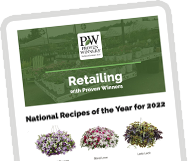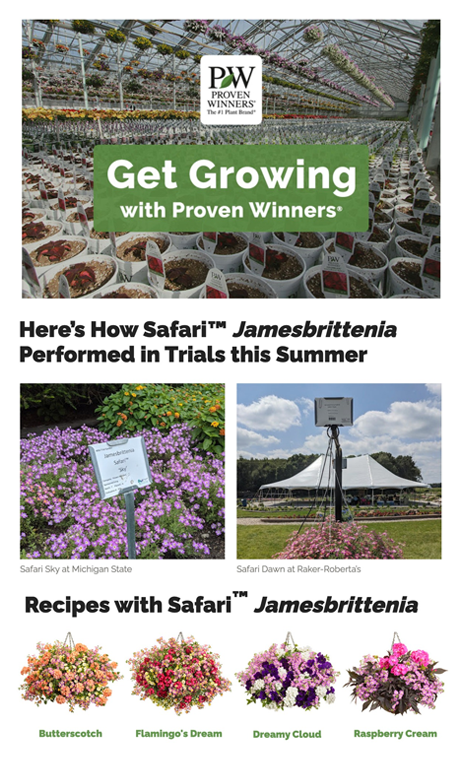What to do first
Once you have bred or found a new flower form, what do you need to do?
First start keeping a paper trail (if you don’t already have one) of how you bred or found the plant. The better your records the easier protecting your new plant is. These records should include the name of the plant the seed or cutting came from and what makes it different. The longer and more detailed your paper trail or breeding records are the better.
If you are sending images of your plant, here’s how to format them. If you want to contact the industry and show them your plant, the first thing you need to do is format any pictures with these words across the bottom of the image ‘NOT FOR SALE’. For all communications with companies who might be interested in your plant these words should be on all pictures. Why? Because the US patent office considers images without these words to be an offer for sale and it affects whether or not your plant can be patented at a later date. For more on what makes a plant patentable or unpatentable check the patenting section of this article.
Contact the industry and see if they are interested in your plant. Always ask for a trial agreement before you send any plants away for trials. It reduces confusion in the trial process and protects both parties as a trial begins. Click here for more info on trial agreements.
Hygiene pays: Every year we receive plants from breeders that are infected with any number of plant viruses, and this usually is enough to remove the plant from our consideration. What you don't know about tissue culture, plant viruses, and bacteria could cost you years of waiting. An infected plant takes at least 2 years longer to get to market than a clean plant, as well it adds two years of additional laboratory costs and labor. How can you protect yourself? Learn more about virus free plants and how to keep plants clean.
Study up and learn a bit about what you are competing against.
- Market Share - Are you providing a new Petunia or a new crop? If there are already a hundred plants of the same type as yours on the market, you can expect it to be 100 times harder to make the same profit. However, a common plant like a petunia can sell 100 times more than a smaller new crop, so there is a balance to this.
- Other Breeders - How many people are doing what you do? For commodity crops; big breeding companies may have teams working on the same crop. What are your chances of success with fewer resources?
- What's your edge? - How is your crop different from all the others? If you don't know, it takes longer for the company you work with to trial and prove any improvements.
- What are you breeding? - Wild is good, new and different is easier to find a market for; but if the industry can't grow it, they won't buy it. Look what is popular: Petunia, Pelargonium, and Coleus. Is what you are breeding this easy to produce? It doesn't have to be, but easier crops move through the systems faster.
- Where does your plant do well? - Is it tropical? Does it require a freeze to flower? Will it only grow indoors? How long does it take to flower? There is a different outlet for each of these plant types, but the more you know about where to look for an opportunity the better your search for a market will be.
What is your personality like?
Another thing to honestly evaluate is your own ability to work with people and deal with details. A lot of horticulturists are really plant-people and not necessarily people-people:
If you hate this stuff...hire a breeder's agent or partner with someone like Proven Winners to work with marketing your plants. Find someone who can make it easy for you to understand the entire process and let you focus on the part you like - the plants.
What does it cost to bring your plant to market?
Even on the cheapest scenario it takes at least $6,000.00 for a company to release your plant. For most plants working through an average company system, it is closer to $10,000, and in some cases might go as high as $20,000. That is what the company spends; most of this will be invisible to you, the breeder; unless you are cost sharing in some way with the company releasing your plant.
Every situation is different, but it helps to have an idea of what is involved. It costs money to introduce a plant as a plant breeder. You should be aware of the costs and how your partners are working with you to cover those costs.
To bring a new crop to market entails a lot of money spent behind the scenes, usually agreements specify who will pay all the different phases of release. Most agreements cost share, and or prorate pre-market expenses against future royalties.
How long does it take to bring your plant to market?
In today's world of high tech horticulture, it is no longer enough to just take cuttings and grow. Most companies have 1-2 years trialing, 1-2 years virus cleaning and stock production, 1 year limited release, then full release and then a year until you may get your 1st royalty check. So plan on about 6 years, it can be faster or slower, but this is a good average.
New plant introductions are not ‘a get rich QUICK’ scheme.
The old feeling was that a plant finder could get rich quick, hey, anything is possible. However, the average independent plant breeder with a few successes is likely getting enough money to pay his greenhouse heating bills, maybe subsidizing some travel or a vacation. It can be more, but you increase your chances of making more if you pay attention to hygiene in your breeding programs, understanding what is on the market, understanding your own strengths & weaknesses, and having a realistic outlook on the time and money involved in the process.
Our advice is to get out and meet other plant breeders, hear their stories, learn from their experiences and when you make a choice on what company you want to work with, make that choice based on your ability to trust them to do the best they can for you and your hybrids. Be realistic, be informed, and be patient. Check the quick links for some ways to find other plant breeders to interact with.




 Sign up for our grower and retailer emails!
Sign up for our grower and retailer emails!
